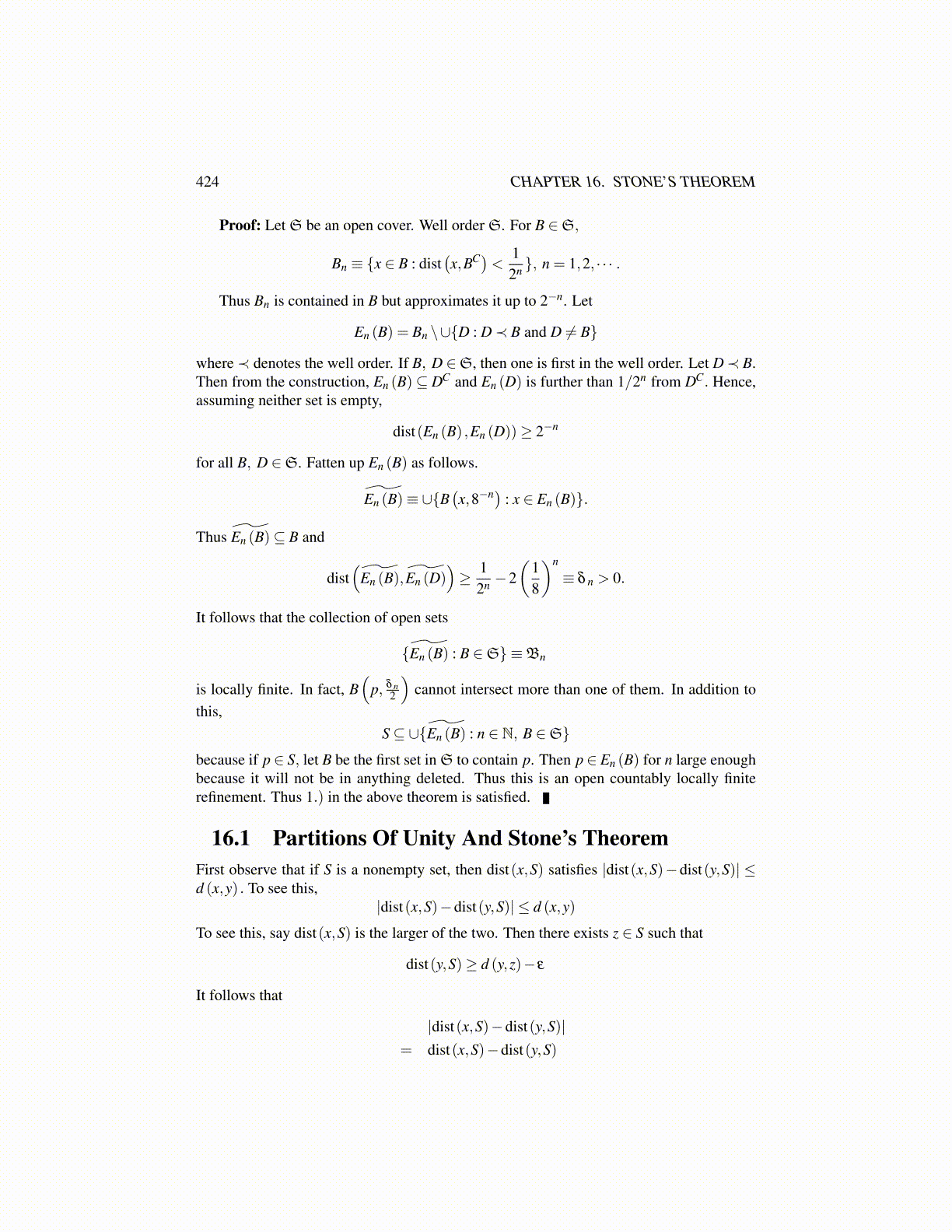
424 CHAPTER 16. STONE’S THEOREM
Proof: Let S be an open cover. Well order S. For B ∈S,
Bn ≡ {x ∈ B : dist(x,BC)< 1
2n }, n = 1,2, · · · .
Thus Bn is contained in B but approximates it up to 2−n. Let
En (B) = Bn \∪{D : D≺ B and D ̸= B}
where ≺ denotes the well order. If B, D ∈S, then one is first in the well order. Let D≺ B.Then from the construction, En (B)⊆ DC and En (D) is further than 1/2n from DC. Hence,assuming neither set is empty,
dist(En (B) ,En (D))≥ 2−n
for all B, D ∈S. Fatten up En (B) as follows.
Ẽn (B)≡ ∪{B(x,8−n) : x ∈ En (B)}.
Thus Ẽn (B)⊆ B and
dist(
Ẽn (B), Ẽn (D))≥ 1
2n −2(
18
)n
≡ δ n > 0.
It follows that the collection of open sets
{Ẽn (B) : B ∈S} ≡Bn
is locally finite. In fact, B(
p, δ n2
)cannot intersect more than one of them. In addition to
this,S⊆ ∪{Ẽn (B) : n ∈ N, B ∈S}
because if p ∈ S, let B be the first set in S to contain p. Then p ∈ En (B) for n large enoughbecause it will not be in anything deleted. Thus this is an open countably locally finiterefinement. Thus 1.) in the above theorem is satisfied.
16.1 Partitions Of Unity And Stone’s TheoremFirst observe that if S is a nonempty set, then dist(x,S) satisfies |dist(x,S)−dist(y,S)| ≤d (x,y) . To see this,
|dist(x,S)−dist(y,S)| ≤ d (x,y)
To see this, say dist(x,S) is the larger of the two. Then there exists z ∈ S such that
dist(y,S)≥ d (y,z)− ε
It follows that
|dist(x,S)−dist(y,S)|= dist(x,S)−dist(y,S)